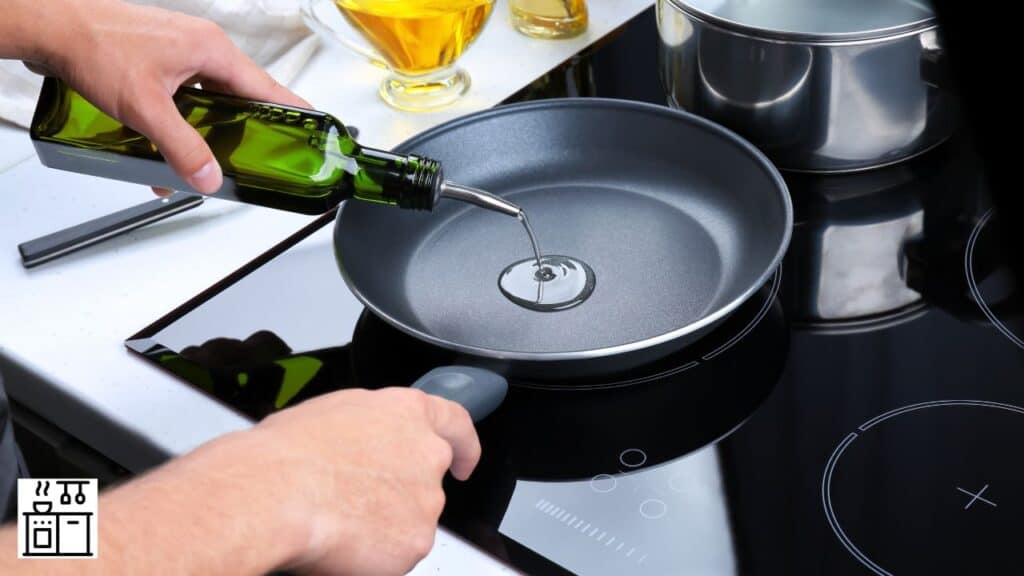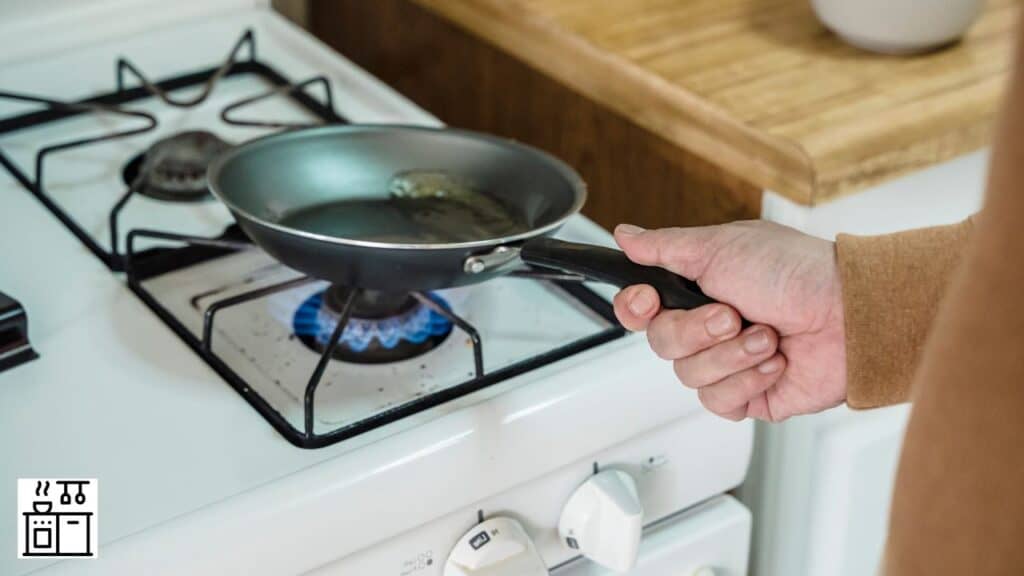Frying pans are indispensable in both household kitchens and restaurants because of the various purposes they serve.
However, they come in different sizes, and you may find it difficult to choose just one pan for all your needs.
So, what size frying pan do you need?
Frying Pan Sizes Explained
Frying pans are usually of three sizes—8 inches, 10 inches, and 12 inches.
While you can use them interchangeably for most needs, you may sometimes need a specific size for certain needs. So…
To select the correct frying pan size, it’s best to consider factors like the type of ingredients you usually cook, the number of people you cook for, your budget, the size of the cooking surface, the amount of space you have, and the weight of the pan when buying one.
Let’s talk about these in detail.
6 Important Factors to Consider when Selecting the Correct Size Frying Pan
Frying pans not only come in different sizes but are made of different materials too.
So it can be challenging to choose a single frying pan to satisfy different needs.
Nonetheless, the size of the pan can be used as a criterion since it will narrow down your options.
Since there are three standard sizes for frying pans, let us look at how to choose from these three different pans for different needs.
1. Type of Food You Cook
Frying pans aren’t too deep.
Hence, it’s a common practice to spread the food evenly on the surface and cook it by moving it around.
You can also flip and toss ingredients in a frying pan.
Since different ingredients have different surface areas and are cooked using different methods, you should consider this aspect when choosing a frying pan.
For instance, if you prefer your eggs sunny-side up over omelets, a smaller frying pan will do.
Meanwhile, a pan with a larger surface area is more convenient if you need a frying pan for tossing and mixing ingredients or beating up sauces.
Based on this factor, let’s look at what size is best for cooking different foods.
- An 8″ frying pan is just the right size to fry an egg, prepare an omelet, and pan fry slices of meat and fish like salmon. You can also use them to make flatbreads or to warm tortillas. This pan will be too small for making sauce.
- A 10″ frying pan is the right size to cook various dishes, including small portions of sauces and stir-fries. You can use it to cook two or three eggs at once and make more than one pancake. It’s also good for cooking more than one slice of meat or fish at once.
- You can cook a whole can of tomatoes, several eggs, or pancakes at once in a 12″ frying pan. This pan can hold several slices of fish and meat and is perfect for deep frying large batches of ingredients and even making pizza on the stovetop.
2. Number of People
One of the most important factors when choosing a frying pan size is how many people you regularly cook for.
If you cook for three or four people, a bigger frying pan is usually essential to hold enough food for a meal.
It will be easier to use a 10″ or 12″ skillet to cook food quickly than extend your cooking time or cook several batches to meet everyone’s needs.
However, if you cook for just one or two members regularly, a smaller 8″ or 10″ frying pan is the more economical and practical choice.
Nevertheless, even in such situations, it’s better to invest in a 10″ pan than an 8″ pan because it can hold much more quantity and is more versatile in the kitchen.
Interesting Reading: 8 Common Materials that Are Used to Make Frying Pans
3. Price of The Frying Pan

Many factors affect the price of a frying pan—the material used for construction, brand, and size.
You may expect 8″ pans to be cheaper than 10″ and 12″ pans.
However, you may be able to find a 10″ pan from an inexpensive brand for the same price as an 8″ pan from a premium brand.
When choosing a frying pan, it’s best to consider factors like durability, ease of handling, and ease of cleaning to make an informed choice.
It’s often wiser to spend a little extra on a 10″ pan than an 8″ pan if you don’t want to upgrade later.
Frying pans made of cast iron or stainless steel may be more expensive, but you can also use them for baking, eliminating the need to spend money on dedicated ovenware.
4. Size of The Cooking Surface
The type and size of your cooktop are other factors to consider when choosing a frying pan.
Small frying pans of 8″ and 10″ will fit on most burners. However, the same can’t be said for 12″ frying pans.
Now, pans are measured from rim to rim. This doesn’t refer to the diameter of the cooking surface.
The actual size of the cooking surface may vary slightly from one brand to the other.
Nevertheless, it’s a minor detail except when it comes to the area it will occupy on the cooktop.
A large frying pan of 12″ will need more area on the stovetop. It’s also designed to sit on a bigger burner.
Using it on a smaller burner will slow down the cooking process significantly.
Smaller frying pans generally heat up faster than large ones.
Another factor to remember is that using a big frying pan on the cooktop will leave you with limited space around nearby burners.
So, you may not have enough space to place a big utensil on an adjacent burner while using your frying pan.
5. Storage Space Available
Frying pans aren’t stackable and hence not easy to store.
It can be challenging to store them away, especially if you are pressed for space.
The constraints are more when you are dealing with a bigger frying pan.
You should have enough storage space to accommodate the long lid of the pan as well.
In this regard, it’s much easier to store an 8″ frying pan than a 10″ or 12″ pan.
However, if you prefer using a bigger pan despite having limited storage space, you can always use vertical space by hanging the frying pan using its handle.
Interesting Further Reading:
- 5 Reasons to Use a Wok Instead of A Frying Pan
- How To Use A Sauté Pan Effectively?
- 6 Factors to Select the Correct Sauté Pan Size
- 7 Easy Steps to Pan-Fry Frozen Chicken
6. Weight of The Pan
Non-stick and aluminum frying pans are light and easy to maneuver.
Stainless steel frying pans are also quite easy to handle.
However, cast iron and carbon steel frying pans are bulky and heavy.
The weight of frying pans increases with size. So a 12″ frying pan will be heavier and more difficult to handle than an 8″ or 10″ frying pan.
For instance, a 10″ pan will be at least one pound lighter than a 12″ frying pan made of the same material and from the same brand.
So this is another factor to consider when choosing a frying pan.
A heavy pan is more difficult to clean and store.
It will also be easier to shake and toss ingredients in a smaller-size frying pan than a bigger one.
So a 10″ pan is a better choice if you do a lot of sauteing, flipping, and tossing of ingredients.

